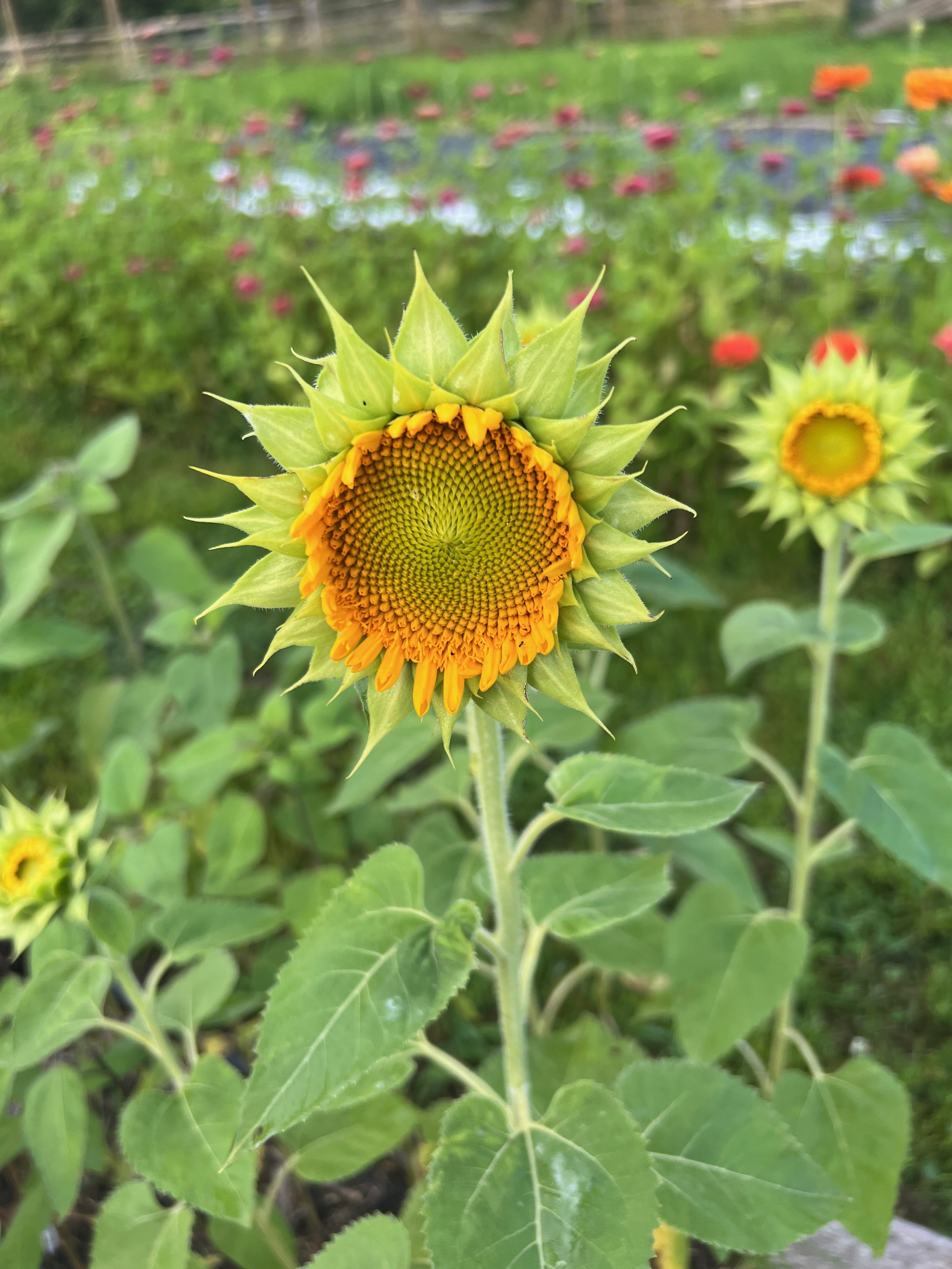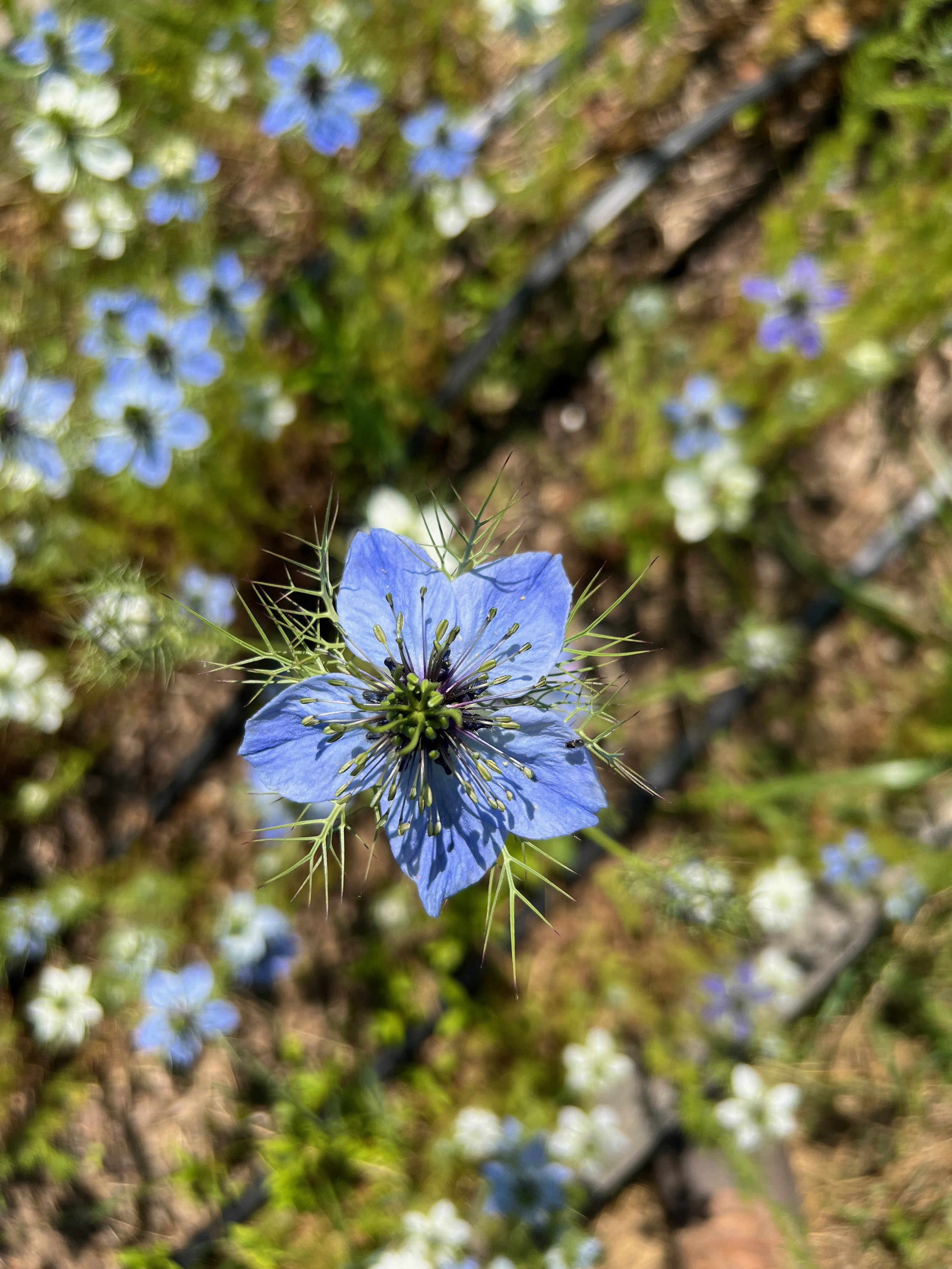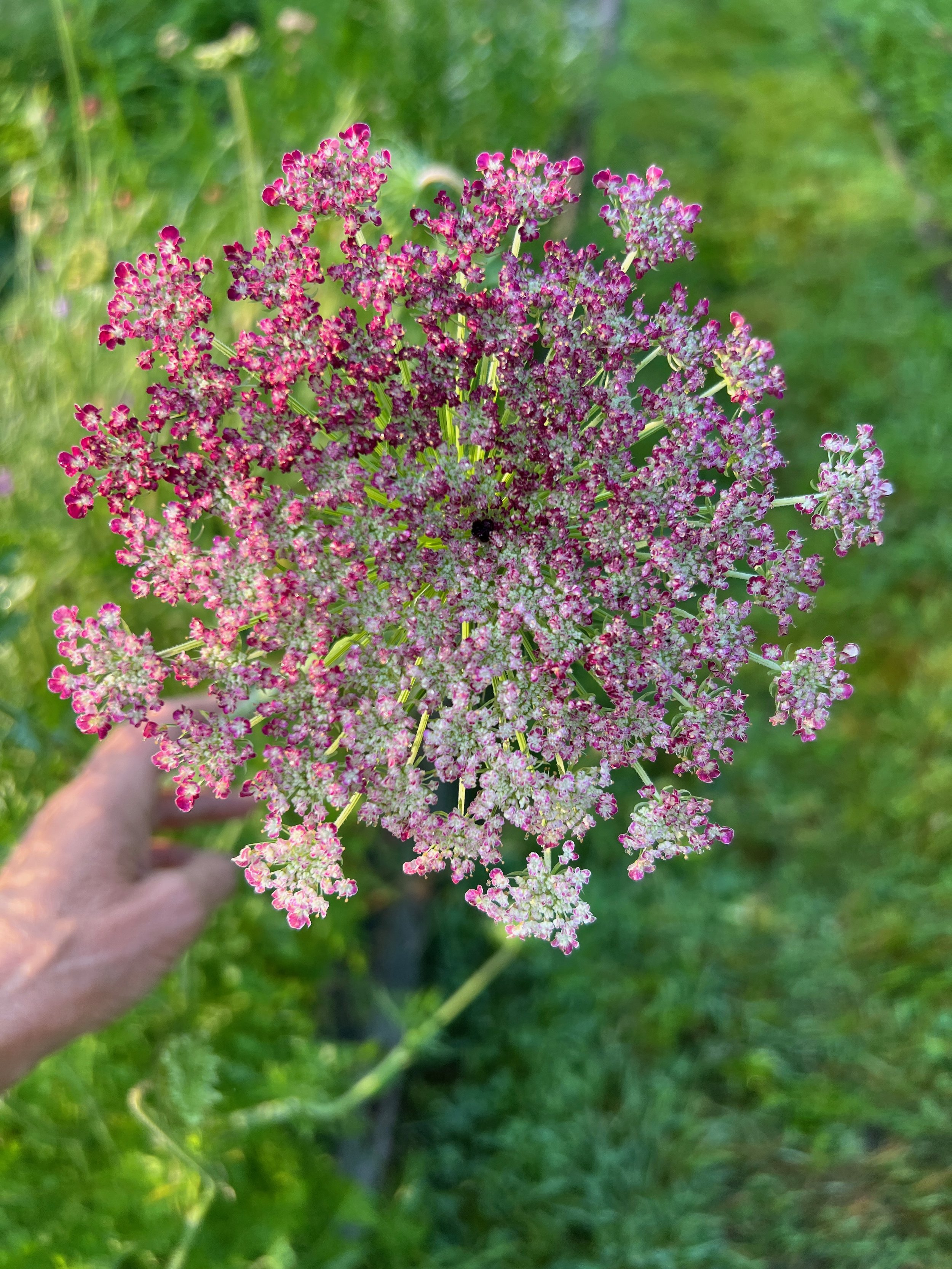Flower Farming Secret for the Home Garden
Flower farming reminds me of the childhood game of hopscotch. Every turn in hopscotch requires some quick plotting as to where you will put your feet. Every week of farming feels the same. Each time I feel like I’ve gotten a handle on the week’s “issue,” a new one pops up that requires a whole fresh round of problem-solving skills.
The August field
This is perhaps most true in August. All the summer flowers are going strong and need frequent harvesting, but the fall blooms need lots of weeding and attention to ensure they are healthy, and it is also time to plan for next year.
The planning for next year is perhaps the most thrilling part of farming for me. It reminds me a lot of my days as a teacher. There is always the promise of a fresh start. When something in the classroom, or now in the flower field, doesn’t go the way I had imagined it in my head, there is always the next school year, or the next growing season to try again. I love fresh starts, and amidst the heat and humidity of this strangely rainy August, some of my best moments have been imagining what flowers will bloom next spring.
Sunflower
A fresh start is the perfect antidote to the many surprises flower farming has gifted me. There are the good surprises, like the fact that sunflowers seem to be able to grow almost anywhere with very little attention on my part. And the less joyful surprises, like you can have a killing frost after the last predicted frost date, even after a shockingly hot April!
Perhaps the biggest surprise I experienced this past year was the amazing resiliency of cold hardy annuals. Cold hardy annuals are flowers that you start in the fall, before the last frost date. They survive the New Jersey winter to produce strong stems and early blooms in May. I direct sowed some of these seeds in my beds last fall feeling certain that I would be replacing what didn’t survive, with new seedlings in late April.
Nigella
I was so wrong. Cold hardy annuals are a flower farming trick that every home gardener should know. These seeds can be heavily sown 4 - 6 weeks before the last frost date. In my area (zone 6b), I plant them in mid-September. They germinate and begin to grow, developing a root system that will sustain them, and then they hang in suspended animation through the cold, rainy New Jersey winter, only to spring to life in March, producing flowers in very late April and May.
These cold hardy annuals were one of my first successes and led me to believe flower farming might not be so hard! Clearly, from my vantage point of August, I’ve recovered from that notion, but I am excited to recreate the magic of those winter warrior flowers. I also have been wondering why I didn’t know about these flowers before I became a flower farmer.
Orlaya
For the home garden, all it really requires is planning early enough to purchase the seeds, spread them in a sunny, spot where there is some exposed soil, and then ward off fall weeds. This part can be a little tricky when first starting out because how do you know the difference between a weed and a seedling? The trick that worked for me was to look for small plants that all look exactly the same. That is probably the flower seed, and everything else can go. After a few weeks of growing, it becomes pretty obvious what is a weed. I let whatever seedlings germinate grow over the fall and winter and then thin the seedlings to about six inches apart in the spring when I know what actually survived.
Cold hardy annual seed packets from Johnny’s
A few of the easy to grow varieties that I will be direct sowing into my field next month are: Nigella, Centaurea (batchelor buttons), Orlaya, and Dara. Although I grow almost all of my flowers inside deer fencing, all of these varieties are supposed to be avoided by deer. My deer seem willing to eat anything, but I did have Orlaya outside the fence that they did not eat, so the others might also be worth a try.
If I’m lucky these flowers will be blooming just as the tulips are finishing, and I’m feeling anxious to be back in the field cutting flowers. These flowers provide so much: early meals for pollinators, the delicate beauty of early spring flowers just as everyone is most hungry for them, and the promise of a fresh start to a new growing season where the weather gods will be in my favor and only the “good” bugs” will arrive.
Often when I’m in the field I’m focused on appreciating the here and now, looking at the flowers and not the problems, stopping to admire the butterflies and bees, but once in awhile (despite what my meditation app cautions against), especially in August, I spend my weeding time imagining the spring and a fresh start.
Centaurea (batchelor buttons)
Dara







